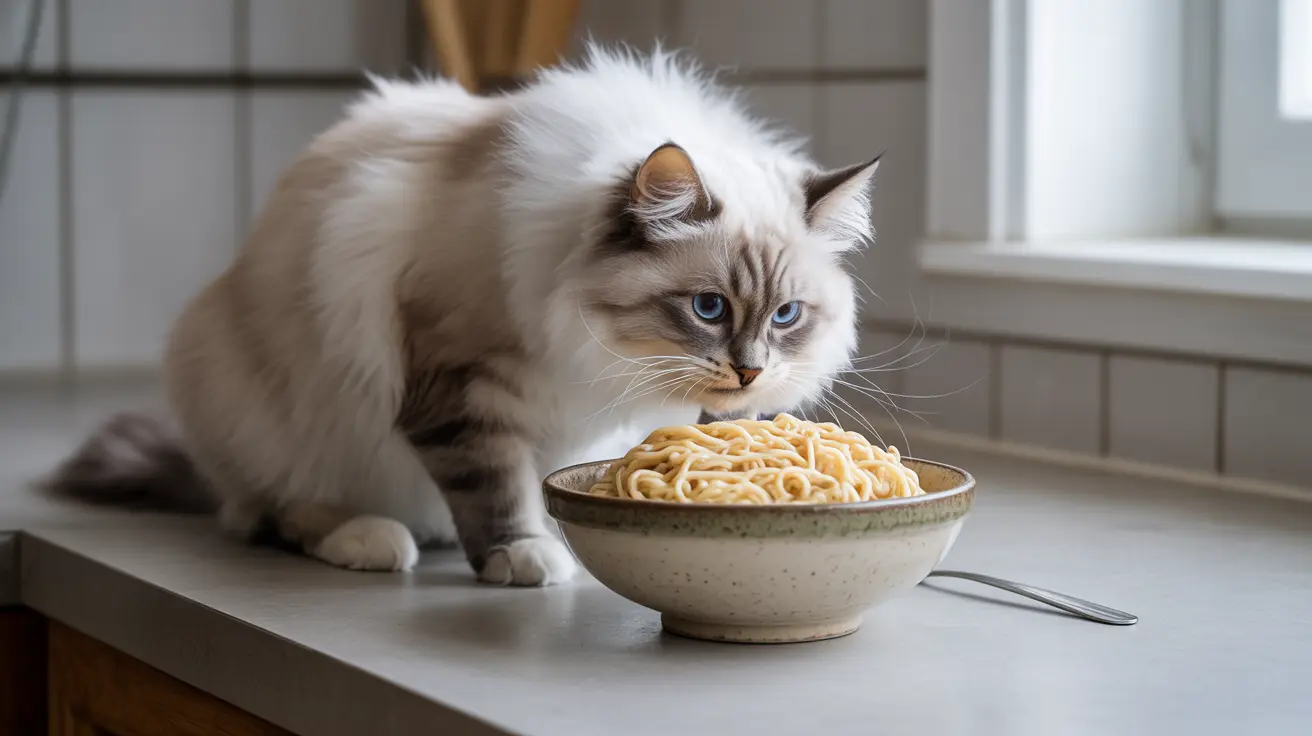Understanding Cats and Carbohydrates
While cats might show interest in that bowl of spaghetti on your plate, their digestive systems aren't designed for processing pasta or noodles. As obligate carnivores, cats require a diet primarily consisting of meat-based protein to thrive.
Before you share that strand of pasta with your feline friend, it's crucial to understand both the risks and limitations of feeding noodles to cats. This comprehensive guide will explore everything you need to know about cats and noodles, including safety considerations and potential health impacts.
The Truth About Cats and Pasta Products
While cats can technically eat small amounts of plain, cooked pasta or noodles, these foods offer virtually no nutritional benefit. Cats lack the necessary enzymes to properly digest carbohydrates, making pasta nothing more than empty calories for your feline companion.
Their digestive systems are specifically designed to process animal proteins, fats, and nutrients found in meat. Feeding them carbohydrate-heavy foods like pasta can lead to various health issues, especially when offered regularly.
Potential Risks and Health Concerns
Digestive Issues
Cats may experience various digestive problems when consuming pasta or noodles, including:
- Vomiting
- Diarrhea
- Constipation
- Bloating
- General gastrointestinal discomfort
Long-term Health Impacts
Regular consumption of pasta can lead to several serious health concerns:
- Weight gain and obesity
- Diabetes risk
- Nutritional deficiencies
- Reduced protein intake
- Dental issues
Safe Feeding Guidelines
When and How to Offer Pasta
If you decide to offer your cat pasta, follow these strict guidelines:
- Only serve plain, cooked pasta
- Limit portions to a few small pieces
- Avoid all seasonings, sauces, and additives
- Monitor your cat for adverse reactions
- Keep it as an occasional treat only
Dangerous Ingredients to Avoid
Never feed your cat pasta that contains:
- Garlic or onions (highly toxic)
- Salt or seasonings
- Cheese or cream sauces
- Oils or butter
- Tomato-based sauces
Healthier Alternatives to Pasta
Instead of offering pasta to your cat, consider these nutritious alternatives:
- Small pieces of cooked chicken or turkey
- Commercial cat treats formulated for felines
- Tiny bits of cooked fish (without bones)
- Cat-specific dental treats
- Fresh water for hydration
Frequently Asked Questions
Can cats safely eat plain cooked noodles or pasta as a treat?
While cats can technically eat small amounts of plain, cooked pasta occasionally, it's not recommended as it provides no nutritional value and may cause digestive issues.
What are the health risks of feeding my cat noodles or pasta regularly?
Regular pasta consumption can lead to obesity, diabetes, nutritional deficiencies, and digestive problems in cats. Their bodies aren't designed to process carbohydrates effectively.
Why should I avoid giving my cat noodles with sauce, garlic, or onions?
Garlic and onions are toxic to cats and can cause severe anemia. Sauces often contain these ingredients, along with excess salt, oils, and other harmful additives.
How much pasta or noodles is safe to offer my cat without causing digestive issues?
If you must offer pasta, limit it to 1-2 small pieces of plain, cooked pasta as an occasional treat. However, it's better to avoid pasta altogether.
What signs indicate my cat is having a negative reaction after eating noodles or pasta?
Watch for vomiting, diarrhea, lethargy, loss of appetite, bloating, or unusual behavior. If you notice any of these symptoms, contact your veterinarian.
Conclusion
While cats can technically eat small amounts of plain pasta or noodles, there's no nutritional benefit to doing so. As responsible pet owners, it's best to stick to a species-appropriate diet focused on high-quality protein sources. If you want to treat your cat, choose options specifically formulated for feline health and enjoyment.






